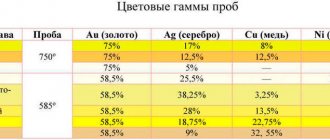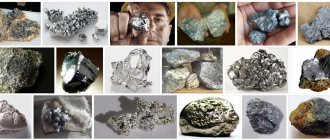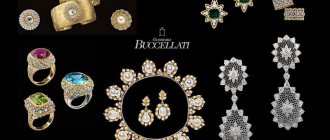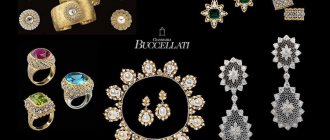There are really only three ways you can store your gold: you can store it at home, use a safe deposit box, or put it in a secure vault.
Of course, each option has certain advantages and disadvantages that are important to be aware of.
Why do we need a World Gold Council?
The headquarters of the World Gold Council, an organization that includes the largest gold miners on the planet, is located in London. To become a member of an international company, an enterprise must produce at least 100 thousand troy ounces of precious metal per quarter.
REFERENCE:
| A troy ounce is equal to 31.1034768 grams. |
The task of the World Council is to analyze data on mining and processing, research the market, and look for new areas of application of gold. Thanks to the work of the organization, it was possible to obtain a product with a purity above 99%.
According to the World Council, the world produced 3,463 tons of gold in 2022. Compared to 2022, production volumes decreased by 1%. This is due to the fact that the deposits known to people have already been depleted, and few new ones are being found. Gold mining is gradually becoming a more expensive and technologically complex process.
The largest reserves of the precious metal are in Africa (19% of world resources). Next come the USA (13%), Australia (12%), Russia (10%), Indonesia (4%). But the list of production leaders looks different:
- China (22%);
- Africa (20%);
- Central and South America (17%);
- Russia (9%);
- Australia (9%).
Gold is also mined in other countries: Kazakhstan, Uzbekistan, Canada. The volume of production is not always equal to the volume of production, since scrap processing is also taken into account.
HOW GOLD BECAME A UNIVERSAL EQUIVALENT
It was customary to mint coins from “metal” in different countries. Some people used silver, others gold. But if earlier the volumes of foreign trade were small, and sellers and buyers independently decided how and with what to pay, then by the middle of the 19th century it became clear that a unified system was needed. And she appeared.
In 1867, at a conference in Paris, developed countries agreed that gold would become such an equivalent. Exchange rates were strictly tied to an ounce of metal. And it could only be changed in two places - London and New York. The main gold reserves began to be stored there.
This system lasted until the end of the First World War. And after that the dollar finally took precedence. In the 1920s, only US currency was pegged to gold, and the pound exchange rate was fixed against the dollar. It was impossible to directly exchange British currency for gold.
The Great Depression in the United States practically killed the world monetary system. And the Second World War bled European economies dry. As a result, in 1944, representatives of 44 countries gathered in the town of Bretton Woods in the USA and agreed on a “new gold standard”. It perpetuated the reserve status of the American currency. The dollar has become a kind of intermediary between gold and other currencies. This meant that countries were dependent on the US and could only print as much money as they had in their reserves of gold and dollars. Stalin, by the way, signed the agreement, but did not ratify it.
— Stable exchange rates contributed to the development of trade. People entered into international contracts without worrying about currency exchange rates changing overnight. The Bretton Woods system was flexible enough to both generate growth and maintain stability, writes economist Michael Goodwin in Economics. How the economy works and why it doesn’t.”
But then something went wrong...
Import and export of gold
Let's name the largest importers of gold (according to the International Trade Center):
| A country | Total transaction value ($ billion) |
| Great Britain | 70,7 |
| Switzerland | 60,6 |
| China | 43,9 |
| India | 32,1 |
| Türkiye | 11,2 |
In total, $306 billion worth of precious metal was imported in dollar equivalent. Russia was not included in the list of largest buyers: gold imports in our country in 2022 amounted to $15.8 million.
And here is what the list of the most active exporters looks like:
| A country | Transaction value ($ billion) |
| Switzerland | 61,9 |
| Great Britain | 23,3 |
| UAE | 17,7 |
| USA | 17,1 |
| Australia | 16,2 |
Russia is in 13th place. In 2022, gold exports amounted to $5.7 billion.
Unique properties
Gold is still considered a safe investment, despite the fact that there are a large number of currencies. There are certain reasons why metal is so highly valued.
Rarity
The metal has been mined for many centuries on different continents. The substance will remain one of the rarest on the planet, despite the large number of mines on the planet. The high price is also associated with the difficulty of extraction.
There is very little gold left in bullion; today it needs to be separated from accompanying rocks; a large number of chemical reactions are carried out to obtain pure metal.
Aesthetic appearance
Gold is widely used in making a wide variety of jewelry. Gold earrings, necklaces, rings in ancient times and today emphasize attractiveness and make its owner more respectable. Gold items given as gifts for any occasion will always be appropriate.
Valuable raw materials for production
The metal has anti-corrosion properties, it conducts heat and electricity. The substance is wear-resistant and has a long service life. Gold is used in instrument making and in the manufacture of corrosion-resistant parts.
The metal perfectly reflects infrared radiation, which allows it to be used in the glass industry to prevent heating of frames. The substance is actively used in the manufacture of dentures and in other areas of medicine.
Currency unit
Gold has been used as a currency for thousands of years. In ancient civilizations, metal was considered a measure of the value of goods and was an indicator of status. The wealth and respect of fellow tribesmen directly depended on the amount of gold.
For a small amount of gold you could get a herd of sheep, slaves, and grain. Gradually, this led to the fact that the entire cost of all goods began to be converted into a “gold” equivalent.
The metal does not lose its properties over time; it is resistant to all influences. A gold bar can lie on the ocean floor for hundreds of years and not change, its weight will not change.
Is it worth investing in gold in 2021-2022?
Against the backdrop of the pandemic, the price of gold increased by 7%: in conditions of economic instability, many are again betting on the most liquid and timeless asset. Indeed, gold is one of the most reliable ways to preserve and increase capital, but only in the long term. Do you have free money and want to provide your children or grandchildren with a decent future? Buy gold in bullion or invest in ETFs.
REFERENCE:
| Gold ETF is a ready-made set of securities backed by the precious metal. |
Do you want to earn money quickly and a lot? Then the gold option is not for you. Consider stocks, currencies or futures: they can bring good profits, however, the risks are also high.
What if you buy gold jewelry instead of bars? Can this be considered investing in precious metals? Yes, but only conditionally. When you get ready to sell “jewelry,” most likely, it will be bought as scrap, the cost of which is an order of magnitude cheaper than that of finished products. The exception is exclusive products that have historical value. It may arouse interest among collectors who are willing to pay a lot of money for a unique work of authorship.
Storing gold in a secure vault
Unlike a safe deposit box at a bank, storing your gold in a secure vault often gives you the benefits of accessibility and direct ownership, in addition to a high degree of protection and insurance.
Advantages
- Easy to Resell
: You can easily resell your precious metals 24/7 and have the proceeds transferred the same day to your bank account anywhere in the world. - Security and Insurance
: You will benefit from secure, dedicated precious metals vaults that are fully insured and subject to regular independent third party audits. - Anytime Delivery
: Your precious metals can be delivered or shipped to you within 24 hours or within a few days, depending on where you are in the world.
However, be aware that some online gold retailers may charge you extra for resale and offer expensive storage deals that do not include insurance.
Flaws
- No Direct Physical Access
: Unlike a home safe, vault storage does not give you direct access to your precious metals. The reason is that you are not allowed to enter the vaults for obvious security reasons. However, you can easily request that your products be delivered to you at any time. - Shared Gold Ownership
: Some gold resellers also sell "shared" or "mutual" gold, which means that instead of being the sole owner of a gold bar, you will have to share a larger bar with other buyers.
White and yellow gold: the reason for changes in the colors of the precious metal
Products are not made from pure gold for one reason: it has a soft structure. If you take a gold bar in your hands and press on it, a dent will remain. It can be easily pierced with a needle or cut with a knife. To ensure that the metal can be processed and used for a long time, alloys are used. Few people know, but jewelry is also made from alloys.
Foreign impurities in the noble metal, alloy, make it possible to make the alloy hard, reduce its final cost, and provide a number of positive characteristics: strength, resistance to oxidation and corrosion.
The ligature affects the color of the alloy from which the jewelry is made. For example, copper gives the precious metal shades from pink to red.
How to care for white and yellow gold
You can extend the service life of gold products in a simple way. There is no need to buy expensive substances; you can use available home remedies:
- ammonia;
- dishwashing liquid;
- hydrogen peroxide;
- salt;
- soda.
Based on these products, solutions are prepared in which gold items are soaked and wiped. The shine of the metal is restored and contaminants are removed.
Gold jewelry is stored in separate boxes according to color. They cannot be polished or rubbed with hard abrasives. If rings or earrings have gemstones, they should be cleaned separately. It is recommended that you take your precious jewelry to a jeweler for cleaning every year.
Yellow gold jewelry
What is gold leaf
Gold leaf is thin sheets glued to the surface of items to create the impression that the entire item is made of yellow metal. The thickness of such sheets can reach several tens of nanometers.
It was first produced in China several thousand years ago. Production was quite simple, because gold is a soft and malleable metal, from which you can get the thinnest sheets without gaps or cracks.
Russia adopted this unique technology, calling the products tinsel or gold leaf. The name comes from the ancient Russian word “susal”, which literally meant “face”, from here it is easy to understand the origin of the term, because only the front side of the product is covered with gold.
The classic standard of gold leaf is 960. This is how the color of gold turns out warm, yellow or the so-called “fiery yellow”. This is the coloring of native metal. Only such a sample is fixed by GOST and can be called gold leaf.
Based on the high cost of such finishing, you can often find imitation tinsel or various gold alloys. Types and differences of gold leaf:
- Double - with this alloy, gold is layered on silver.
- Talma - with this alloy, gold is layered on copper.
- Potal is an imitation of tinsel without the presence of noble metals, made using metal plates (copper and aluminum) or various alloys (copper and zinc). With this method, to protect against corrosion, it is necessary to coat the product with varnish.
- Tin sulfide or Mousse gold is an imitation of gilding using metallized paint to which a compound of sulfur and tin is added.
- Titanium nitride is a very durable and wear-resistant coating that allows you to vary the shades of gold using nitrogen.
- Gold foil, one of the most recent developments, is a copper alloy coated with nickel and cobalt.
The global “golden reset” is set to begin on June 28
The Bank of Russia is playing giveaway with the West, selling gold abroad at a time when its value should begin to rise sharply. At the same time, the country does not experience a shortage of paper dollars, which are doomed to become cheaper.
Major decisions in the world of finance are usually prepared and made quietly, sometimes in an atmosphere of complete secrecy. This fully applies to the plans of the Bank for International Settlements (BIS) in Basel, as well as financial regulators of leading Western countries to introduce new rules for bank operations with gold. Such rules have been prepared over a number of years within the framework of Basel III (a document of the Basel Committee on Banking Supervision, containing methodological recommendations in the field of banking regulation and approved in 2010-2011).
The fiction of “paper gold” and the “bubbles” inflated by it
After the decision to demonetize gold, adopted at the Jamaica Conference in 1976, this precious metal was not completely expelled from the world of banks and money, but was there in a “Cinderella” position. The “queen” was the American dollar. For 45 years, the “queen” withered and completely weakened. Look, not today or tomorrow he will die. But “Cinderella” has blossomed and can take her place. The past 45 years have been dramatic. The “Queen” and her entourage tried to kill “Cinderella” countless times, but all these attempts were frustrated.
There were many ways of “attempts” on “Cinderella”. One of them, which has not yet been prohibited, is the creation of “paper gold” and the frantic development of the market for such “paper gold”. I think that in the very near future such virtual gold, if it is not completely prohibited, will be very limited in use. And this could happen on June 28 of this year. As agreed by the BIS and EU financial regulators, new rules for accounting and working with gold – both “paper” and physical – will be introduced from the end of this month.
What is “paper gold”? These are various financial instruments “tied” to gold, primarily its price. These can be futures and options, which are commonly called “derivatives”. Futures and options “linked” to gold have been known for a long time. But after the Jamaica Conference, derivative financial instruments turned from a means of hedging risks related to the supply of real goods into gambling instruments. The rapid development of the gold futures and options market began, which were actually fictitious contracts and very rarely resulted in the delivery of physical gold. For market players, it was a gambling business, and this business was actively supported by those who were interested in the strengthening of the US dollar. After all, the cheaper gold was, the more confident the American dollar felt. The precious metal and the US Federal Reserve's printing press were bitter rivals. “Paper gold” created the illusion of a huge increase in the supply of gold. And this brought down the price of physical gold, which is what the “masters of money” (the main shareholders of the US Federal Reserve) required.
The paper-dollar standard gave rise to rapid growth of financial markets, the “printing press” of the US Federal Reserve pumped dollars into “bubbles” in the financial and commodity markets. And against the backdrop of these “bubbles” and rising prices for many commodities, the price of gold was strangely at the “plinth level”. Work to suppress the price of gold was carried out by the “masters of money” and their entourage in many directions. It is not even possible to describe all directions in telegraphic language. But one of the main ones was pumping up the markets with “paper gold.”
The world's largest gold trading platform is located in the English capital. The London Bullion Market Association (LBMA) operates there. Gold trades here at an average of $20 billion per day, or more than $5 trillion per year. Almost all trade comes down to the purchase and sale of “paper gold”. Experts estimate that only five percent of contracts on the London market result in the delivery of physical gold. The rest are fictitious transactions for the sake of winning a bet: who will guess the price of the yellow metal?
The world's second largest trading platform for precious metals is the New York COMEX exchange. There, it is estimated that only 1 percent of transactions result in the delivery of physical gold.
There is gold and "gold"
The main players in the paper gold market are banks. The bank can also work with physical gold. Almost all of the physical gold that banks deal with belongs to clients. This gold is not reflected in the bank's balance sheet (an off-balance sheet asset). This gold is clearly identifiable (ingots of a certain standard, numbered), stored in specially equipped premises. Such gold is called “distributed”.
However, unidentified gold predominates, it is also “undistributed”. A bank may have assets and liabilities (liabilities) in the form of unallocated gold, expressed in ounces or other physical units, but tied to the price of the yellow metal at a particular point in time. This “unallocated gold” is reflected in the bank’s balance sheet. The existing rules for accounting for “undistributed gold” allow banks to accumulate a very large number of contracts, but if a banking crisis occurs or if market prices for physical gold sharply fluctuate, such banks may lose stability, and there are risks of bankruptcy. I will not immerse the reader in the details of the existing rules for banks working with gold, but I will note that they push them to ensure that banks find themselves at the “red line” or even beyond it.
In 2022, the Bank for International Settlements had already thoroughly developed new rules for working with gold. They provided, on the one hand, for increasing the status of physical gold (transferring it to the category of “first-level capital”). On the other hand, the conditions for working with “unallocated gold” (read: “paper gold”) were tightened. Very strict ratios were proposed to cover the bank's obligations for “undistributed gold”. This meant: if you want to work with “paper gold”, please do so. Only these operations require substantial amounts of equity capital (share capital, authorized capital) and additional reserves. In general, the central banks of many countries around the world have already understood which way the wind will begin to blow in the near future. And they began to act ahead of time, turning into serious net buyers of the yellow metal, not “paper”, of course, but physical.
Not a pardon, but a reprieve
In February 2022, there was a rumor that the BIS would introduce new rules for working with gold on March 29 of that year. Then catchy headlines appeared in the media like: “Gold is returning to the world of money again.” They said that gold would receive the status of capital of the first (highest) level. With all the ensuing consequences for gold itself on the world market and for the US dollar. But nothing happened either on the specified day or later. One version of this story is that the BIS actually planned to introduce new rules, but the “masters of the money” managed to put pressure on the BIS at the last moment, and it, in turn, pulled the brakes. Last year, due to the “COVID-19 pandemic,” the BIS imposed a moratorium on any action to tighten the rules of the new Basel.
But this year, already around February, there were rumors that new rules on gold within the framework of Basel III would nevertheless be introduced. And they even named the exact date – June 28, 2022. Today these are no longer rumors. European Union banks admit that they have received a directive from financial regulators on new gold rules, which will actually start at the end of this month. There is even more noise about the new rules on the islands of Foggy Albion. The London Bullion Market Association (LBMA), which is known to include many City of London banks, is panicking. She is lobbying the BIS, the Bank of England, and the British Prudential Regulation Authority to prevent the introduction of new rules, or at least delay their introduction. As of today, financial regulators in England say that the new rules will come into effect on January 1 next year.
There are comments in the Western media about the BIS innovation, according to which the new rules will deal a fatal blow to the US dollar. They (the new rules) will not only reduce the volume of transactions with “paper gold”, they will destroy the market for such fictitious gold. Consequently, the brake that held back the rise in prices for physical metal will disappear. And if prices for the yellow metal begin to rise, then the dollar will be ruined. However, some commentators believe that the “masters of the money” will again be able to convince the BIS at the last moment that the introduction of new rules should be postponed. No, not cancel, but postpone. Because even they already understand that the dollar is doomed. But “before death, as they say, you can’t breathe enough.” Why do they need a delay? They want to prepare for the transition to a new world financial order, where there will no longer be a “queen” called the “US dollar”. How are they preparing for the new order? Yes, it’s very simple - buying yellow metal at the lowest possible price.
Russians have their own “pride”
Please note: there are good statistics with which we can identify the main sellers of physical gold. Last year, the Chairman of the Bank of Russia, Elvira Nabiullina, announced that the Central Bank of Russia would stop purchasing gold mined in the country from April 1, 2022. And domestic miners of the precious metal were forced to ship gold abroad. At the end of last year, as reported by the Federal Customs Service (FCS), 320 tons were exported - the annual volume of production of the precious metal. Almost all the metal went to London. Russia has become one of the leading gold exporters.
But statistics are silent about buyers of gold in general and Russian gold in particular. Buyers prefer not to shine. They are, so to speak, “changing their shoes.” Yesterday they were betting on the US dollar, and today they are frantically converting dollars into still cheap gold. There is a catastrophic shortage of physical gold on the world market. Everyone buys gold: England, Switzerland, Turkey, India, and China. By the way, China, which ranks first in the world in gold production (about 400 tons per year), does not have enough precious metal; it imports at least 1000 tons annually. One can imagine what a generous “gift” Nabiullina gave last year to unknown buyers of Russian gold. Indeed, at the time when the decision was made to stop gold purchases by the Bank of Russia, it was already clear that in the near future the BIS would introduce new rules for working with gold for banks. Nabiullina cannot but know this. After all, the Bank of Russia is a member of the BIS. And she, as the head of the Bank of Russia, regularly visits the BIS headquarters in Basel. Maybe that's where her true bosses are. And by introducing a moratorium on the purchase of gold, she is following their instructions?
Or you can look at the decision of the head of the Bank of Russia to stop purchasing gold from the other side: what gigantic damage was caused to Russia and its citizens by such a decision. From the point of view of national interests, it should be called a crime.
P. _ S. _ I regularly follow the speeches of the famous Mexican billionaire Hugo Salinas Price. He has been working in the precious metals market for a long time and openly states that the price of gold and silver has been artificially suppressed in order to keep the US dollar afloat. On May 31, he published a publication called “June 28: Bank for International Settlements Caves In to Russia and China.”
In his article, he completely correctly assesses the consequences of the planned introduction of new gold rules by the BIS on June 28 of this year. True, his statement that the BIS is “surrendering to Russia and China” is a clear exaggeration. Neither Russia nor China, to my knowledge, exerted any pressure on the BIS. The decision of the BIS is dictated by the need to save all Western capitalism. You can sacrifice the US dollar for this. Moreover, he is already on his last legs. It is already useless to save him.
Apparently, Hugo Salinas Price wanted to say something else: Russia and China, as leading gold-mining countries, could become the main beneficiaries of the gold decision planned for the end of this month. And this is the absolute truth. I would really like to take advantage of the opportunities that open up. But for this we need to stop playing giveaway with the West.











